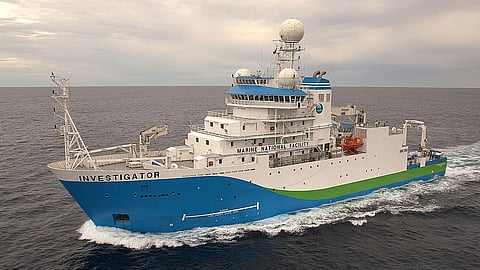

Scientists on board the Commonwealth Scientific and Industrial Research Organisation (CSIRO) research vessel Investigator are preparing to conduct a dedicated deep-sea survey of marine life in the Coral Sea Marine Park off the coast of Queensland, Australia.
CSIRO said this new research voyage will use Investigator's extensive suite of scientific equipment including a deep towed camera, an eDNA sampler, trawls, and sleds to explore biodiversity and better understand ecological changes.
The research will be led by CSIRO with support from Parks Australia, Bush Blitz and The Nippon Foundation-Nekton Ocean Census, and in collaboration with a network of museums, universities and research institutes.
Voyage Chief Scientist Dr Will White from CSIRO said the 35-day research voyage would generate vital data and samples that will inform future conservation of benthic (on or just above the seafloor) communities and increase Australia’s knowledge of marine ecosystems and biodiversity in the region.
"The benthic zone is the ecological region at the interface of the ocean and the Earth’s crust, so it means we’ll be exploring the deepest habitats where some of the most interesting and least known species of fish and invertebrates live," Dr White said.
"These include fish without eyes, swimming sea cucumbers, deep-sea corals and many species perhaps never before seen by human eyes. With the help of an expert team of scientists, CSIRO technicians and crew on board, our goal is to learn more about what’s in the Coral Sea Marine Park and discover and describe as many new species to science as we can."
The team will also map the seafloor in high resolution using Investigator's advanced multibeam echosounders, which will help improve marine park managers' understanding of underwater habitats.
The Coral Sea Marine Park is the largest marine park in Australian waters, covering 989,836 square kilometres and protecting vast reef areas, and 67 cays and islets. It is part of a network of 60 Australian marine parks managed by Parks Australia that cover around 43 per cent, or 3.8 million square kilometres, of Australia’s marine environment.
Scientists on board will also conduct regular live crosses to schools around the country to showcase what working as a researcher at sea is like.
Following the voyage, the data and specimens collected will be used by a team of national and international scientists to advance knowledge of Australia’s deep-sea environments and to support marine park management and future research.
